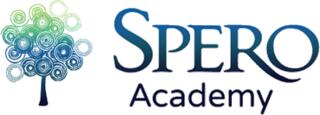
At Spero, our mission is to provide individualized education to students with autism or other disabilities. One of the ways we do that is through the Four Blocks Literacy Program. The Four Blocks is a framework for teaching students to read that allows all children, regardless of ability level or learning style, to master the basics of reading and writing.
The Four Blocks framework was originally developed by a group of teachers who believe that for all children to learn to read, you have to “do it all.” “Doing it all” means incorporating a variety of different techniques and approaches throughout the curriculum in order to provide opportunities for children with different abilities and learning styles to engage with the material and master the skills.
At Spero, we often have children of variable skill and ability levels in one classroom. It is challenging – if not impossible – to engage every child in the day’s lessons using the same techniques. With a multilevel teaching approach like the Four Blocks framework, we’re able to overcome that challenge. Following the Four Blocks program allows Spero teachers to provide individualized instruction to each student.
What Are the Four Blocks?
As you might guess from the name, there are four core pillars within the Four Blocks program. The four elements of the Four Blocks framework are:
- Self-selected reading (SSR)
- Guided reading
- Writing
- Working with words
Spero teachers incorporate each of these four blocks throughout the daily curriculum to provide a variety of ways for students to engage with the material and master the skills of reading and writing. There are also opportunities for individualization within each block, so every student is able to participate at their own level.
Block One: Self-Selected Reading
Self-selected reading (SSR) is an opportunity for students to choose their own books and read independently at their own level. The goals of SSR are to allow students to view themselves as capable and engaged readers, encourage students to pursue their reading interests, inspire intrinsic motivation to read, and to provide an opportunity for students to discover an authentic enjoyment of reading.
In addition to independent reading time, SSR may include:
- Teacher read alouds - The teacher may kick off the SSR block by reading aloud to the class.
- Teacher conferencing with students - While the students read to themselves, the teacher will talk one-on-one with a handful of students each day.
- Sharing with peers - Students pair up to share their favorite books, or may take turns sharing with the whole class what they’re reading that day.
Block Two: Guided Reading
Teachers must help students not only learn to read, but to understand that the ultimate goal of reading is to gather information from the text. The Guided Reading block focuses on reading comprehension skills and strategies. In Guided Reading, our goals are to teach students how to read different types of literature, to develop background knowledge, and apply their skills in the context of “real” reading.
In the Guided Reading block, teachers focus on:
- Mastering comprehension skills and strategies
- Developing background knowledge, vocabulary, and oral language
- Introducing children to different types of literature
- Providing instructional-level reading
- Boosting self-confidence and motivation of struggling readers
Block Three: Working With Words
In the third block, students take reading to the “word level.” They begin to understand that reading will come much more quickly if they master the high-frequency words that make up the majority of text. Teachers prioritize these high-frequency words, aiming for students to master 110-120 words per year. The second piece of this block is continuing to explore new words, letters, sounds, and patterns
The Working With Words block aims to help students:
- Learn to read and spell high-frequency words
- Recognize patterns used to decode and spell lots of words
- Transfer word knowledge to their own reading and writing
Block Four: Writing Block
Research shows that many children can first learn to read from their own writing. In writing, students have to put together all the elements they’ve learned in the other blocks, such as grammar, mechanics, and meaning. The writing block easily incorporates multi-level learners, with opportunities for independent writing at whatever stage a student is at in their writing development.
The goals of the Writing Block include:
- See writing as a way to communicate
- Learn to read through writing
- Apply grammar and mechanics in writing
- Recognize different forms of writing
- Write fluently
A multi-level model for teaching students to read allows Spero teachers to support students at various stages of development to make progress along their own learning journey within the same classroom.

